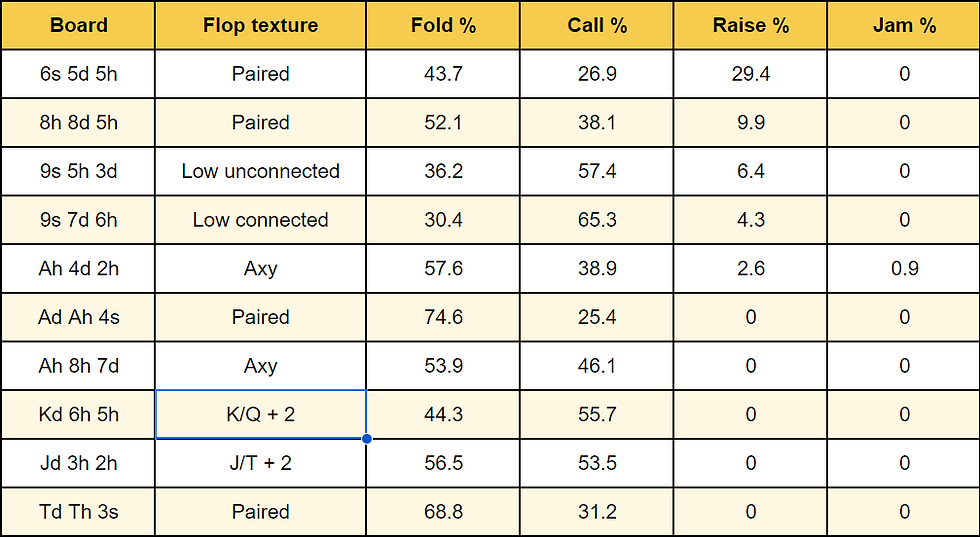OTB #060: Don't Make This Mistake In Multiway Pots
- Gareth James
- Sep 17, 2024
- 3 min read
Updated: Apr 15

If you’ve ever found yourself struggling in multiway pots, you're not alone.
Multiway pots can be some of the trickiest situations in tournament poker.
With multiple opponents in the hand, things get messy fast, and it’s easy to make mistakes that can hurt your winrate.
But here’s the good news: there’s one common mistake that a lot of players make in these situations — and with a small adjustment, you can avoid it and start making better decisions in multiway pots.
Today I’m going to show you exactly what that mistake is and how to fix it, so you can approach these tough spots with confidence.
Let's dive in...
The meat in the sandwich
50bb effective, the CO opens, the BTN calls and you also call in the Big Blind.
You and the original raiser (the CO) both check on the J95fd board and the BTN bets small.
What are some hands you might raiser here as the player sandwiched between the player betting and the original raiser?
A set of 5s or a two pair hand like J9 or 95s for value maybe?
What about some flush draws or straight draws as a bluff as well?
The answer...
You shouldn't have a raising range here.
Unstudied players in multiway pots will choose to raise in this spot with their strong hands, and then sometimes some bluffs as well.
But let's face it, not many people are that good at finding bluffs here... mainly because the better players know that they're not supposed to have a raising range in this spot and the weaker players are just too damn passive.
Raising here is a mistake because:
a) If you raise your strong hands here, your calling range becomes very weak and you'll struggle to continue if the CO chooses to squeeze
b) You have the original raiser still left to act who has an uncapped range because they checked their entire range on the flop
c) You have the lowest proportion of nutted hands right now
Here's what your strategy should look like:
You only have two actions - call or fold.
As a general principle, you should just call or fold when facing a bet as the sandwiched player in a multiway pot when the original raiser is still left to act.
However...
Boards that favour your range
The times to raise are on boards when you have a high proportion of strong hands, generally much higher than the original raiser who is still lurking in the wings with their uncapped range.
On some paired boards like this one, you will have a high raising frequency:
The Big Blind can now leverage the fact that they have a lot of nutted hands by raising some bluffs as well.
And those bluffs can get a lot of better hands to fold.
So when you raise Qh Jh here, the original raiser has to fold all of their Ax and Kx hands.
But the BB's calling range isn't capped because it still has some very strong hands like full houses and trips that don't always raise, and hands that can improve on a variety of runouts like 6x, straight draws and backdoor flush draws.
While there are some boards that have some raises in this spot, the frequency is still very low apart from on some select paired boards.
It's much easier to default to either folding or calling in these spots, and then finding a reason to raise.
Summary
Multiway spots can be tough to play. But the simple heuristic of just defaulting to calling as the sandwiched player should lead you to reducing your options postflop, which is a good thing, and makes playing later streets a lot easier.
You won't always be capped when you call and you'll continue with a mixture of strong hands, made hands and draws, so you can have a wide variety of strong hands on many different run outs.
That's it for this week.
See you next time.






Comments